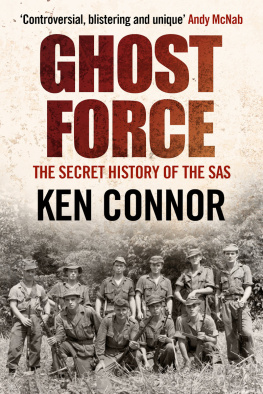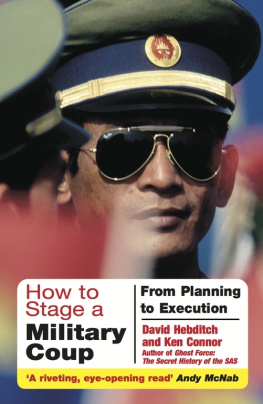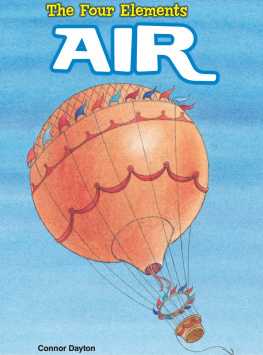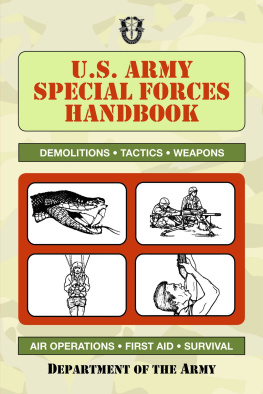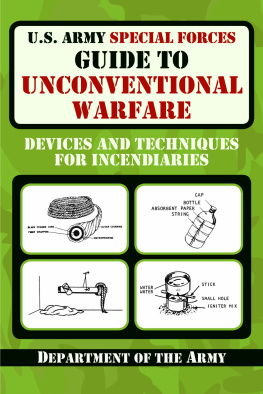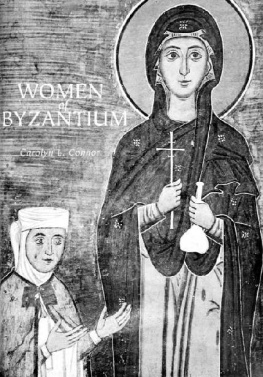Ghost Force
The Secret History of the SAS
Ken Connor
Copyright Ken Connor 1998
The right of Ken Connor to be identified as the author of this work has been asserted by him in accordance with the Copyright, Designs and Patents Act, 1988.
First published in 1998 by Weidenfeld & Nicolson.
This edition published in 2018 by Lume Books.
Table of Contents
Glossary
adoo : Arabic word for enemy
AWACS : airborne warning and control system
BDF : Botswana Defence Force
BG : bodyguard
casevac : casualty evacuation
CO : commanding officer
contact : engagement with the enemy
CQB : close-quarter battle
CR , CS : types of antipersonnel gas
Crabs : the RAF
CRW : counter-revolutionary warfare
CT : counter-terrorist
DF : direction-finding
DZ : dropping zone
E&E : escape and evasion
FAC : forward air controller
firqat : irregular troops comprising tribesmen of the Omani province of Dhofar
FMB : forward mounting base
FOB : forward operating base
Foreign Office : used throughout instead of its cumbersome full name, the Foreign and Commonwealth Office
14 Int : Fourteenth Intelligence Company
gaysh : Arabic name for the regular troops of the Sultan of Omans armed forces
Glacis plate : front plate of a tank, where the armour is thickest
GPMG : General purpose machine-gun
GPS : global positioning system
Green Slime : Intelligence Corps
Head Shed : those in authority, often though not exclusively officers. The expression originated in Malaya, derived from the watershed at the head of a river from which everything flows
hard dog : attack dog
humint : intelligence collected by human beings
jebali : mountain tribesman from the Omani province of Dhofar
LTD : laser target designator
LZ : landing zone
LUP : lying-up position
MID : Mention in Despatches
MSR : main supply route
NBC : nuclear, biological and chemical warfare kit
NCO : non-commissioned officer
net : radio network
NVG : night-vision goggles
OC : officer commanding
OP : observation post
PNG : passive night goggles
RPG : rocket-propelled grenade
RSM : regimental sergeant-major
RTU : return to unit, the fate of soldiers sacked by the SAS
Rupert : officer, not always derogatory
RV : rendezvous
sangar : fortified observation post, usually dry stone, often constructed by night in complete silence
SADF : South African Defence Force
SAF : Sultans (Omani) Armed Forces
SARBE : search and rescue beacon
sat-coms : satellite communications
SBS : Special Boat Service
SEPs : Surrendered Enemy Personnel
siaseet : Arabic word, literally meaning political, but used to describe anyone suspected of being devious
sigint : signals intelligence
SIS : Secret Intelligence Services, also known as MI6, the covert arm of the Foreign Office. Took its present form at the end of the Second World War when the SOE was merged with MI6
SLR : self-loading rifle
SOAF : Sultan of Omans Air Force
SOE : Special Operations Executive
SOF : (US) Special Operations Forces
SOP : standard operating procedure
SSM : squadron sergeant-major
Tacbe : tactical beacon
Tac-sat : satellite communications
TOS : Trucial Oman Scouts
Preface
I had several motives for embarking on this book, not the least of them the desire to tell the story of the Regiment as succeeding generations of SAS men have told it to each other.
I wanted to tell the hitherto untold story of the Regiment except where continuing operations make that impossible but also to give due prominence to the men who helped to shape the SAS and build the reputation it enjoys today. I didnt want the stories of the Old and Bold to die with them.
The existing SAS histories written by people such as John Strawson, Tony Geraghty, Philip Warner and Anthony Kemp suffer from three constraints: they are all written by outsiders though John Strawson had a distinguished career in other branches of the armed forces largely rely on the testimony of high-ranking officers and can draw on little supporting documentation.
The lack of documents is in part a product of the Regiments obsessive secrecy. John Strawson was given access to SAS documentation but the policy of shredding paper at the conclusion of covert SAS operations which effectively means all of them ensures that the written sources are less valuable than they would be in other circumstances.
Official reports on SAS operations do still exist, but they were written for external army consumption, often by officers who were not part of those operations, and are extremely unreliable records of events.
There are few other documents for historians to consult. Military and government papers which might shed some light on the Regiments activities are often buried under the thirty-, fifty- or one-hundred-year rules.
The second constraint on writers is largely self-inflicted. Authors such as Hugh McManners in The Scars of War and Robin Neillands in A Fighting Retreat have used the stories of all ranks to convey something of the experience of war through soldiers eyes, but, like the SAS historians, they would be most unlikely to seek a foot-soldiers opinion on overall military strategy.
Just as some general histories are written as if the story of monarchs, presidents, prime ministers and dictators is the whole story of mankind, so military history is almost invariably constructed from the opinions and recollections of senior officers and commanders-in-chief.
There are valid reasons for that honourable tradition. It is the correct approach to writing about almost every section of the armed forces. While the trogs slog through the mud, keeping their eyes on the toe-caps of their boots, the officers alone have the time to raise their eyes, scan the distant horizons and separate the strategic wood from the tactical trees.
The SAS is unlike every other section of the armed forces, however, and to place too much reliance on officers as sources is to give only a partial in both senses of the word account of the Regiments history.
The SAS has its own long and honourable tradition: leadership is by merit, not rank. It also has another unique feature. Only the troopers and NCOs form a permanent cadre; officers are seconded to the Regiment for a three-year tour and then return to their former units.
The implications go far wider than the simple matter of who gives the orders on a patrol. There were and are many areas of SAS activity about which most, and sometimes all, of the officers remained in blissful ignorance. The only people with an overview of the Regiments actions in the long term were the senior NCOs.
During my twenty-three-year service with the SAS I was fortunate enough to be one of those men and to be privy to some of the Regiments most covert and clandestine operations, unknown not just to the outside world, but to 99 per cent of its officers and men too.
I have tried to tell the whole history of the SAS and also set it in its political context. Military histories often seem to regard political events as merely a footnote or a tiresome interruption to the main action.
Yet without an understanding of the external forces shaping Britains post-war defence priorities and the way that the SAS came to be used as an integral part of British foreign policy, it is impossible to appreciate the true importance of the Regiments contribution to the maintenance of Britains power, influence and affluence in the modern world.

